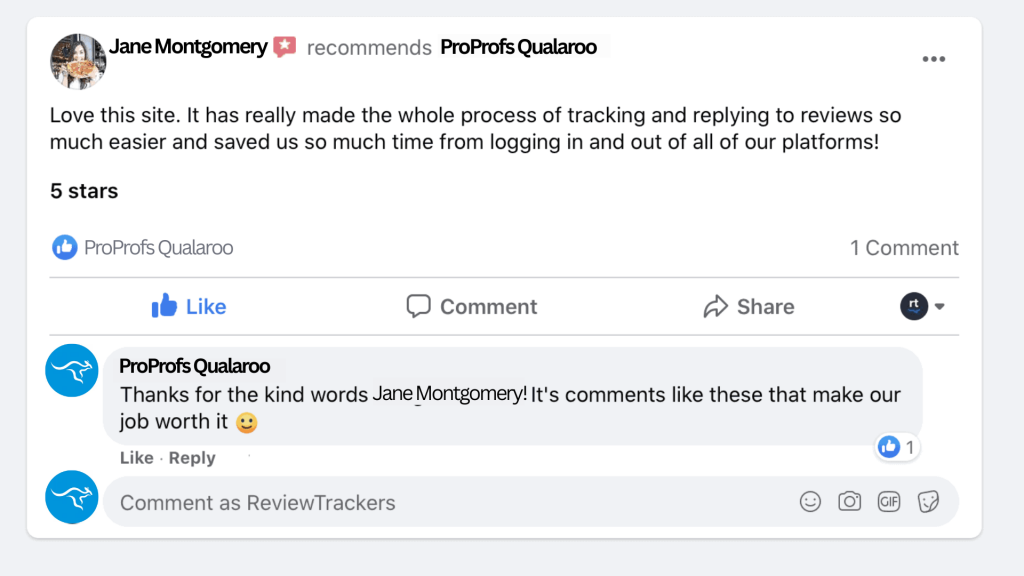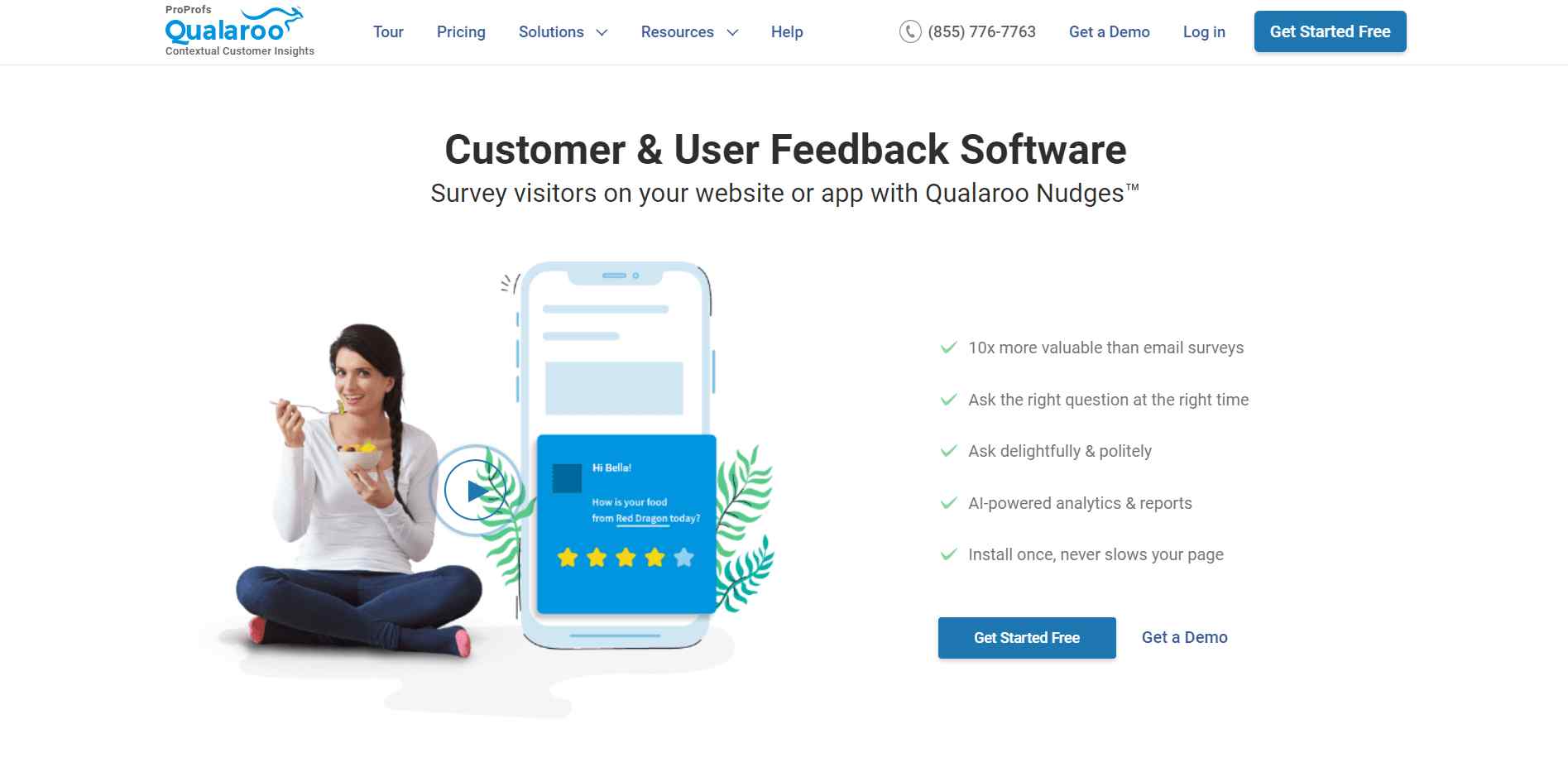Most brands believe they understand how people perceive them. They glance at reviews, skim NPS scores, and call it a day. Then, one day, a Reddit thread or a frustrated Quora post goes viral, and suddenly, the truth emerges in 500 unfiltered comments.
That’s brand sentiment. It’s what people “really” think about your brand when no one’s asking. It’s the emotional pulse behind every mention, meme, or support ticket. You can’t fake it, and you can’t ignore it.
But here’s some good news: you can measure brand sentiment, analyze it, and use it to make sharper product, marketing, and customer experience decisions. The key is building a system that captures emotion as data and turns that data back into growth.
In this guide, we’ll break down:
- What brand sentiment actually means (and what it doesn’t),
- How to measure it using real-time feedback and AI tools,
- How to build a sentiment strategy that drives action, and
- Why mastering it separates reactive brands from resilient ones.
Let’s start with the basics before we get to the dashboards.
What Is Brand Sentiment?
Brand sentiment means how people feel about your brand. It is the emotion behind every review, post, or message about you. Some people might be happy, some neutral, some frustrated, and that mix tells you how your brand actually exists in the world.
It is not the same as brand awareness or reputation. Awareness shows that people know you exist. Reputation shows what the media or influencers say about you. Sentiment reveals what your actual customers feel when they use your product, read your emails, or interact with your support team.
You can find it everywhere: in Reddit threads, Quora answers, social media comments, and survey responses. These are unfiltered opinions that show what people love, what annoys them, and what they wish you fixed sooner.
Here’s a simple example:
- “Love how fast support helped me.” → Positive sentiment
- “Support replied, finally.” → Negative sentiment
Same topic, but the emotion changes the meaning completely.
When you can measure these feelings across all your channels, you start to see patterns. And once you see patterns, you can act on them.
Next, let’s look at how to measure brand sentiment in a clear and structured way.
How to Measure Brand Sentiment
You cannot improve what you don’t measure. Brand sentiment works the same way. You need to collect honest feedback, process it, and turn it into numbers you can track over time.
Here is a step-by-step guide on how to do it:
1. Gather the Right Data
Start by listening in the right places. Your goal is to collect comments and opinions from where customers already talk. That includes:
- Reddit, Quora, and other online community forums

- Social media posts and replies

- Online reviews and feedback forms
- Survey responses, especially open-ended ones
- Support tickets and live chat transcripts
If you already collect feedback on your site or app, include one open-ended question. That single text box often reveals more emotion and insight than ten multiple-choice questions combined. Here’s a video for you to gather feedback effectively:
2. Use Smart Tools to Read the Tone
Reading thousands of comments manually isn’t a practical approach. This is where AI tools come in. They can read open-text feedback, detect emotions, and classify tone as positive, neutral, or negative.
Many survey and feedback platforms now include built-in sentiment analysis powered by IBM Watson. For example, tools like Qualaroo use an NLP engine to interpret the tone behind customer comments automatically. It helps teams move faster by showing what users actually feel, not just what they click.
Look for tools that can:
- Analyze multiple languages accurately
- Understand tone and context (not just keywords)
- Group similar emotions together
- Track changes in mood over time
The point is to make emotion measurable, so you can act on it without guessing.
3. Track the Right Metrics
Once you have the data, start turning it into clear numbers. The most useful ones are:
- Sentiment Score: The ratio of positive, neutral, and negative mentions.
- Text-Based NPS: Analyze open responses to learn why users are promoters, passives, or detractors.
- Share of Voice (SOV): Your share of the total conversations compared to competitors.
- Sentiment Velocity: How quickly opinions are shifting. A sudden drop usually signals an issue worth investigating.
Keep these metrics visible on a single dashboard. Review them regularly, just like you would with revenue or engagement numbers.
4. Watch for Real-Time Shifts
Sentiment can swing overnight. A product update, viral post, or poor customer experience can flip perception fast. Real-time monitoring helps you spot those changes before they become public problems.
If you notice a sudden rise in negative mentions around one issue, treat it as a signal. Respond quickly, fix the cause, and communicate openly. Brands that react fast usually recover faster, too.
You now have a way to measure emotion at scale. Once you can see what people feel and how it changes, you can start shaping that emotion in your favor.
Next, let’s build a clear system for turning those insights into action.
Steps to Build a Brand Sentiment Strategy
Measuring sentiment is half the job. The real work is turning those numbers into action. Here’s how to build a simple, repeatable system that helps you understand what people feel, fix what’s broken, and amplify what works.
1. Build Listening Into Your Routine
Don’t make “sentiment tracking” a side project. Bake it into your weekly rhythm. Open your sentiment dashboard the same way you check analytics or revenue.
Every spike or dip is a story:
- A sudden drop in positivity might trace back to a new feature release.
- A jump in neutral mentions could mean a campaign landed flat.
The key is not reacting emotionally but curiously. Ask why every time the graph moves.
2. Connect Emotion to Operations
Raw sentiment means nothing until you connect it to what your team actually controls.
If people are frustrated about support speed, that’s not a marketing issue; it’s staffing or workflow. If the sentiment around “ease of use” improves, that’s product UX paying off.
Map every recurring emotion to an owner. That’s how you turn “brand perception” into something your team can act on.
3. Prioritize Patterns, Not Outliers
One angry comment doesn’t define your brand. Fifty similar ones do. Look for repeating language across different channels.
If customers on Reddit, Twitter, and in your surveys all mention “pricing confusion,” that’s your next fix. Don’t chase every emotional swing. Instead, focus on the trends that repeat over time.
4. Respond in Public, Repair in Private
When you see negative sentiment, resist the urge to hide it. A thoughtful public reply can shift the narrative faster than silence.
But once the fire cools, take the real work offline. Talk to the customer, fix what failed, and then update your community about the change. That loop — respond, repair, report — is how you rebuild trust and momentum.
5. Turn Sentiment Into Product Signals
Every recurring theme in sentiment data is a product decision waiting to happen. For example:
- “Too many clicks” → simplify workflows.
- “Fast and friendly support” → make that your headline.
- “Great product, slow updates” → rethink your release cadence.
Sentiment is customer intent in plain language. Treat it like a product backlog written by the market itself.
6. Keep It Lightweight
Don’t bury sentiment under slides and reports. A single-page snapshot works best:
- Top 3 positive trends
- Top 3 negative trends
- Actions taken or planned
Share it in team meetings. Keep it visual. If everyone can see how the brand feels this week, they start making decisions that move those feelings in the right direction.
You don’t need a “sentiment department.” You just need a consistent habit of listening, learning, and adjusting fast. Once you do that, the brand starts speaking your customers’ language — and that’s when real loyalty forms.
Applying Sentiment Insights in Real Life
Once you start tracking how people feel about your brand, the next move is to make that data useful. Not as a report, but as input for real decisions: the kind that change products, improve conversations, and fix minor annoyances before they grow.
Here’s what that looks like in action:
1. Use Feedback as Your R&D Shortcut
Customers tell you what to build next. They just don’t say it in product terms.
- Every “I wish…” in a comment is a roadmap request.
- Every “I’m confused about…” is a UX ticket waiting to be written.
Pull those insights straight from sentiment themes. If multiple users talk about friction during onboarding, fix the flow before adding another feature. It’s faster and often more profitable than guessing what to launch next.
You don’t need a focus group when your customers are already writing one for you every day.
2. Coach Support With Real Comments
Support scripts are good. Empathy is better. Take a few real customer quotes each week, both happy and frustrated, and walk your team through them.
Ask simple questions:
- What made this user feel supported?
- What made this one lose trust?
When your team hears how their tone lands emotionally, responses shift from robotic to human.That alone can change how your entire brand feels online.
3. Let Marketing Borrow From Sentiment Data
Most marketing teams write headlines based on guesswork. You don’t have to.
If sentiment analysis shows users love your “speed” or “simplicity,” make those your key themes. If they complain about “setup time” or “bugs,” fix those before you turn up the ad spend.
Sentiment is like free copy testing. It tells you which phrases already spark emotion — positive or negative so your campaigns sound like customers, not marketers.
4. Watch Competitor Sentiment for Gaps
Your brand isn’t the only one being talked about. Monitor sentiment around your competitors quietly. You’ll often see weaknesses you can position against, like poor support, confusing pricing, lack of innovation.
If your data shows people complaining about their “clunky dashboard” while praising your “ease of use,” there’s your next message: “A dashboard you don’t need to fight with.”
The market hands you openings. All you have to do is listen.
5. Flip Negativity Into Trust
Every negative comment is a chance to show character. When someone criticizes you publicly, respond quickly, politely, and with context. Then fix the issue if it’s real.
People notice how you handle mistakes more than the mistake itself.
Handled well, even a tough comment can turn into proof that your brand listens and cares.
6. Connect Emotion Back to Business
At the end of each month, ask one question: “What business result changed because of sentiment?”
Maybe positive emotion went up after a new onboarding guide. Maybe negativity dropped after faster support replies. Those small wins prove that emotion translates directly to revenue, retention, and reputation.
That’s the power of sentiment done right. It grounds every decision in how people actually feel, not just what they say.
Here’s a real-life success story of how Belron, the global leader in windshield repair, used sentiment analysis to improve the customer experience.

FREE. All Features. FOREVER!
Try our Forever FREE account with all premium features!
The Future of Brand Sentiment Analysis
Brand sentiment is evolving quickly. What started as a simple way to sort comments into positive or negative categories is now becoming a detailed look at how people feel and why they feel that way.
Here is what the next phase looks like:
| Trend | What’s Changing | Why It Matters |
|---|---|---|
| Emotion Mapping | Sentiment tracking is moving from simple “positive or negative” labels to identifying emotions like joy, anger, or sarcasm. | You understand how people feel, not just what they say. This gives you more accurate and human insight. |
| Real-Time Signals | Feedback is now processed instantly, rather than through quarterly reports. | You can act fast when sentiment drops, turning issues into quick wins instead of slow recoveries. |
| Multilingual Intelligence | AI tools can now read tone in many languages and understand cultural context. | Your brand sounds consistent and respectful across regions and audiences. |
| Sentiment as a KPI | Emotion tracking is becoming a key business metric, alongside revenue and churn. | It predicts customer loyalty and highlights problems before they affect growth. |
| AI + Human Blend | Machines detect tone; people bring empathy and judgment. | This mix fosters faster, more thoughtful responses and makes your brand feel more relatable and human. |
Why Brand Sentiment Matters
Brand sentiment is not just data. It is emotion at scale; the sum of how every customer feels after interacting with you. That feeling drives everything that follows: repeat business, reviews, and long-term trust.
When you track sentiment, you are not just measuring opinion. You are measuring connection.
Here’s why it matters:
- Predicts Loyalty Before the Numbers Do: Sales reports show what already happened. Sentiment shows what is about to. If emotion turns negative, churn usually follows. When positivity grows, referrals and retention rise. Keeping an eye on how people feel gives you an early warning system for your most important business metrics.
- Strengthens Every Customer Touchpoint: Sentiment connects the dots across teams. Product sees what frustrates users, support understands how to fix it, and marketing learns what customers love most. When every team uses emotion as a shared language, customer experience becomes consistent and clear.
- Builds a Brand That Feels Human: People do not connect with perfect brands. They connect with honest ones that listen and improve. When you respond to emotion with empathy, trust grows faster than any paid campaign ever could.
- Turns Listening Into a Habit: Most companies start listening only when something goes wrong. Smart ones make it routine. Regular sentiment reviews help build awareness early and prevent issues before they escalate. Over time, this rhythm — listen, learn, act, repeat — becomes part of your brand’s DNA.
- Keeps You Ahead of the Market: Tracking sentiment about your brand and your competitors gives you a live pulse of the market. It reveals what people care about at present and where expectations are shifting. React to those signals faster than anyone else, and you stay relevant without chasing trends.
The Real Work Starts With Listening
Once you start listening, patterns emerge fast. You see what delights, what frustrates, and what quietly drives loyalty. And when you act on those signals early, your brand starts to feel more human, responsive, and trusted, which is what customers remember long after the campaign ends.
If you want a simple way to collect and understand what users feel, try using built-in sentiment tools like Qualaroo, which offers AI-powered analysis by IBM Watson. It helps you capture the real emotion behind every comment so you can focus less on guessing and more on improving.
Listening well is the new growth strategy. Start there, and the rest of your metrics will follow.
Frequently Asked Questions
Is brand sentiment a KPI?
Yes. Brand sentiment is one of the most useful KPIs for tracking emotional connection and brand health. It predicts customer loyalty and signals potential issues before traditional metrics like churn or NPS show changes. You can treat it as a live measure of trust — if it moves, your business results soon will too.
How does AI help analyze open-ended feedback?
AI-powered sentiment analysis reads free-text responses and detects tone, context, and emotion in real time. This helps you understand how users feel without manually reading every comment. Tools like Qualaroo use IBM Watson’s NLP engine to make sense of thousands of responses instantly, turning unstructured text into clear insights.
Why should you collect sentiment right after key actions?
Capturing sentiment immediately after a key interaction, such as completing a purchase or using a new feature, provides raw, unfiltered emotion. It shows how users feel in the moment, before memory or bias sets in. This makes the feedback more accurate and helps teams fix issues or amplify wins while the experience is still fresh.
Can sentiment analysis handle multiple languages?
Yes, but only if the tool supports multilingual NLP. Many advanced systems now process feedback in languages like German, Spanish, and Nordic tongues with high accuracy. This is critical if your brand operates globally, as tone and emotion can vary across cultures and phrasing.
FREE. All Features. FOREVER!
Try our Forever FREE account with all premium features!

 We'd love your feedback!
We'd love your feedback! Thanks for your feedback!
Thanks for your feedback!





